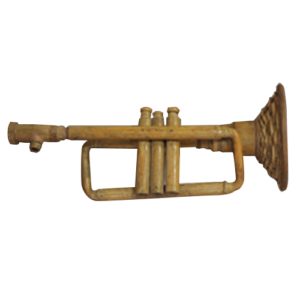Elementary Module
BAMBOO MUSICAL INSTRUMENTS OF T’BOLI IN SOUTH COTABATO
- Volume 2
Background
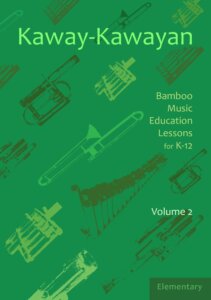
Excerpt from the BMI Ethnography of T’boli of Lake Sebu, South Cotabato
“The Bamboo Musical Instruments of the T’boli of Lake Sebu” By Juliet R. Bien
This ethnography is about the bamboo instruments of the T’boli of Lake Sebu. The name “T’boli” is a combination of tau, meaning “people,” and bilil or “hill” or “slope”, thus meaning “people living in the hills.” The other terms that refer to the T’boli are Tboli, Tiboli, and Tagabili. They are an indigenous people living in the southern part of Mindanao, particularly in the municipalities of T’boli Surallah, Lake Sebu, and Polomolok in the province of South Cotabato and in Maasim, Kiamba, and Maitum in Sarangani. The municipality of Lake Sebu has 19 barangays, and the T’bolis live with the Ubos, the Manobos, and the Tasadays.
Lake Sebu as the T’boli’s cultural heartland refers to two geographical areas: the municipality, and the lake within. Both are located in the Allah Valley, bounded on the north by the municipality of Surallah, in the southwest by the municipalities of Maitum and Kiamba, on the east by the municipality of T’boli and on the west by the municipality of Palembang in the province of Sultan Kudarat.
Musical instruments among the T’boli are classified as male and female. Megel/ lembang are male and lemnoy/lemnek are female. Male instruments are loud and played in public while female instruments are soft and are played in private. Citing Manolete Mora, an ethnomusicologist whose expertise is T’boli music, Jimenez says that these categorizations are very fluid as it “does not directly and exclusively determine the social situations in which the instruments are played. Rather, it identifies instruments within a general orientation and this type of categorization is not immutable.” Among the bamboo instruments discussed in this documentation, the sacred drum t’nonggong is male and the rest are female.
The bamboo instruments featured in this ethnography are played for personal and community entertainment. Music-making is usually conducted at home for domestic enjoyment, to rest after a day’s work. Community celebrations such as weddings and settlements of conflict among the T’boli also require music performance and dancing. Music festivals also provide occasions for a big gathering of musicians in the community. The Halabon festival which occurs every November is an example of a big festival participated in by the musicians of the community. The cultural masters and instrument- makers interviewed for this research are the resource persons who teach the younger members of their community. Regular visitors, tourists, students, and music enthusiasts are the audiences who avail themselves of the traditional knowledge shared by the masters and instrument-makers.
The size of Philippine indigenous musical instruments mentioned in this research are not standardized. The instruments’ measurements are written in approximate units of lengths and diameters because they are handcrafted individually. The musical instruments vary in sizes because of the materials used, that are readily available in their environment.
The bamboo musical instruments of the T’boli are following:
|
Instrument |
Method of Sound Production |
Melodic Range |
Role in the Ensemble |
Function in Ritual or Social/ Cultural Activity |
|
 |
Kesal (slit drum, idiophone) |
laid horizontally, beaten with two wooden sticks |
A3 |
Individually played
Accompanies t’nonggong |
Personal entertainment
Festivals
Community celebrations |
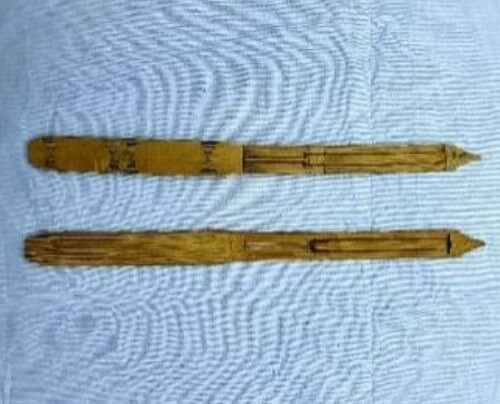 |
Kumbing (jaw’s harp, idiophone) |
plucked |
Kumbing1 C3-F#3
Kumbing 2 C#3-A3 |
individually played |
Personal entertainment
Festivals
Community celebrations |
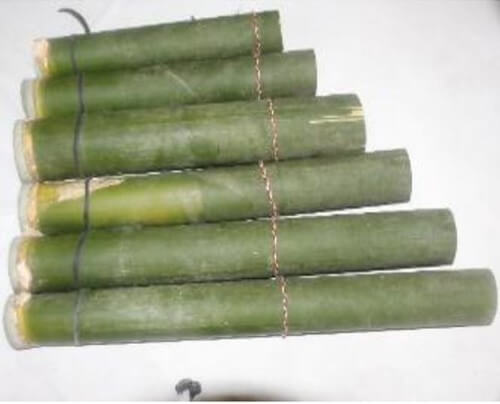 |
Klintang sokong, (idiophone) |
Beaten with sticks on the open-ended upper tube |
A2-B2 |
Played by 2
Plays with the rest of the instruments in the klin- tang sokong ensemble |
Personal entertainment
Festivals
Community celebrations |
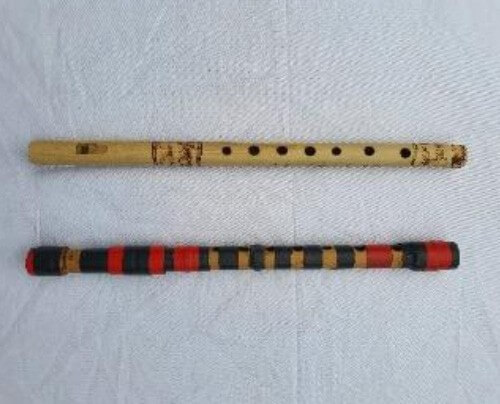 |
Sloli (chip on ledge flute, aerophone) |
blown |
Sloli 1: A3-D5
Sloli 2: C#3-B5 |
individually played |
Personal entertainment
Festivals
Community celebrations |
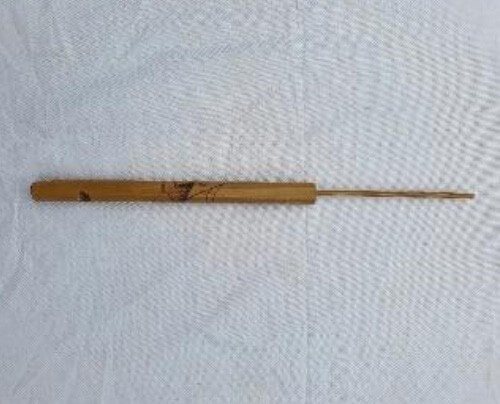 |
Few onuk (flute imitating bird sounds, aerophone) |
blown |
A7#-B7 |
individually played |
Personal entertainment
Festivals
Community celebrations |
 |
Sludoy (5-stringed
tube zither, cordophone) |
plucked |
D3-A3 |
Individually played |
Personal entertainment
Festivals
Community celebrations |
|
Instrument |
Method of Sound Production |
Melodic Range |
Role in the Ensemble |
Function in Ritual or Social/ Cultural Activity |
|
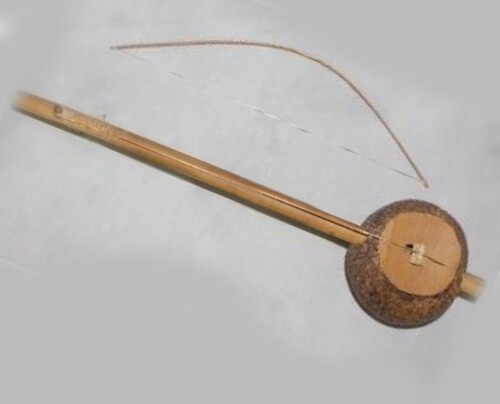 |
Dwegey (one-stringed spike fiddle, cordophone) |
bowed |
D4-G4 |
Individually played |
Personal entertainment
Festivals
Community celebrations |
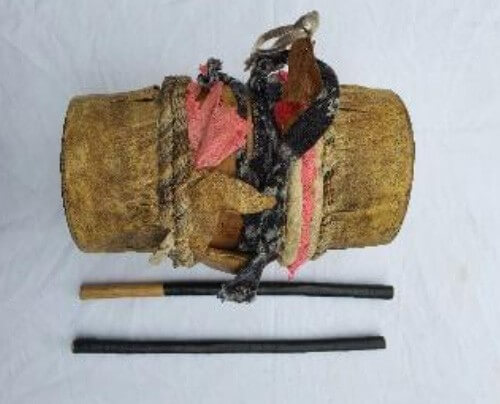 |
T’nonggong (double- headed cylindrical drum, mem- branophone) |
Beaten with two sticks |
F3# |
Individually played |
Personal entertainment
Festivals
Community celebrations |
A. Content Standards
Demonstrate understanding of the basic concepts of rhythm through performances, listening, and improvisation.
B. Performance Standards
Perform simple ostinato patterns or rhythmic accompaniments on classroom instruments and other sound sources to a given song.
C. Learning Competencies/Objectives
- Maintain a steady beat when chanting, walking, tapping, clapping, and playing bamboo percussion or other percussion instruments available
- Perform the written stick notation on the board representing the sound heard
- Play simple ostinato patterns with bamboo percussion or other percussion instruments available
A. Steady beat – repeating, continuous, evenly-spaced beats that are felt throughout the music
C. Rhythm – combination of short and long sounds
D. Rhythmic ostinato – a rhythmic pattern that is continually repeated throughout the music
A. References
1.Print Materials
a. BMI ethnography on the T’boli in South Cotabato
b. BMI documentation pictures of the T’boli people and bamboo instruments
2. Audio-Video Materials
a. Videos from the BMI documentation

b. Video of the T’boli Tribe
c. Video of the T’boli Chanter, Lake Sebu, Philippines
B. Other Learning Materials
Improvised percussion instruments:
- Available bamboo musical instruments from the T’boli ethnolinguistic group, preferably t’nonggong and kesal
- Improvised slit drum (cylindrical can, container, or PVC pipe with a slit in the middle)
- Double-headed frum (large tin can or cylindrical container with layers of packing tape for the membrane/skin)
- Sticks for playing the percussion instruments (drumsticks or long wooden/ bamboo sticks)
A. Reviewing the previous lesson or presenting the new lesson
-
- Ask the selected students to recite their definitions of music
- Play the video The T’boli Tribe.
- Ask which part of the video caught their attention. Ask the students if they heard music in the video and why they think it is Ask also what they think the instruments are made of.
- Explain to the students that a combination of sounds can be considered music if it is put together for a specific purpose. In the video, the T’boli people use music for rituals, celebrations, and entertainment
B. Establishing the purpose of the lesson
- Play the T’boli BMI video of the T’boli masters playing the t’nonggong and kesal. Ask the students if they heard the T’boli masters playing the same or different sound patterns on their instruments.
- Ask the students what their music would sound like if the T’boli masters play the same sound pattern together.
C. Presenting examples/instances of the new lesson
- Watch another T’boli BMI video of a T’boli master playing a bamboo Ask students if they can hear the sound pattern being played.
- Ask them to try imitating the sound pattern by softly tapping their
D. Discussing new concepts and practicing new skills 1
- Define and discuss steady
- Play 2–3 familiar Filipino folk songs and ask them to perform different movements (marching, jumping) and body percussion (clapping, tapping a body part) on the beat.
- Watch the video T’boli Chanter, Lake Sebu, Philippines. Ask the students if the beats of the chant are steady or They may try to nod their head or clap their hands to figure out if the beat is steady or unsteady.
- Discuss how some kinds of music have unsteady beats and what kinds of music usually do not have steady beats.
E. Discussing new concepts and practicing new skills 2
- Perform simple rhythmic patterns using body percussion and ask the students to perform it back (call and response).
- Define and discuss rhythymic.
- Show the T’boli BMI video of the T’boli masters playing the t’nonggong, kesal, and few onuk with Let them guess the animal that the dancer imitates. Tell them that the T’boli call the dance Madal Tahaw or Bird Dance.
- Watch the dance again. This time, ask the students if they can feel the steady beat of the song. Let the students gently clap the steady beats along with the Afterwards, ask the students what they think of the rhythmic pattern of the instruments and how these helped the dancer perform.
- Tell the students to look for an object inside their bag that they can use as an instrumernt
- Divide the class into two Assign the steady beat to one group and give a simple rhythmic pattern to the other group.
- Guide the steady beat group first, making sure that they will not go faster or When the beat is already steady, cue the other group to do their rhythmic pattern, making sure that they do it on the beat.
- Let the groups switch A different rhythmic pattern may be assigned this time.
F. Developing mastery (leads to formative assessment)
- Use syllables and stick notation to represent simple rhythmic patterns. Design the stick notation like that of a bamboo

2. Let the students perform one rhythmic pattern at a The first rhythmic pattern serves as the steady beat.
3.Divide the class into two groups and assign a rhythmic pattern to each
4. Let the students practice their patterns through chanting and clapping. Once they mastered the patterns, distribute the bamboo instruments and percussion
5. Ask the students to play their assigned rhythmic pattern on their
6. After playing, ask the students to create their own 4-beat rhythmic pattern using the syllables and bamboo stick notations. Let a group representative draw or write their rhythmic pattern on the
7. Ask the first group to play their created rhythmic pattern repeatedly on their instruments. Do the same for the second group.
8Provide the steady beat and let the two groups perform their created rhythmic patterns
8. Assess their performance using teacher-made
G.Finding practical applications of concept and skills in daily living
- Different groups of people have different ways of putting together It .s best to know what type of sounds it is about and how they use it to better understand their use of steady beats and rhythmic patterns.
- Some indigenous groups do not use pictures or symbols for their music because they pass down their music aurally (by listening and imitating). For Filipino indigenous groups like the T’boli, it is very important to listen with focus and
H. Making generalization and abstraction about the lesson
Music that has steady beats is easier for other people to follow and join in. Music that does not have steady beats are usually performed alone, giving the soloist more freedom to put together the sounds he/she wants.
Rhythmic patterns and combinations of short and long sounds can help in communicating the message of a song or dance.
We can use objects around us to produce rhythmic patterns. Materials that are readily available and found in the immediate surroundings can be used to make musical instruments. Students can ask their parents or guardians to help them in making musical instruments from recycled materials. Aside from it being cheaper, using recycled materials as improvised musical instruments can help lessen trash in our surroundings.
I. Additional activities for application or remediation
The groups may challenge each other by creating a rhythmic pattern and asking the other group to perform it.
The teacher may perform rhythmic patterns and ask the students to choose the correct stick notation among two to three options.
For the formative assessment, a third group may be made to accommodate students who can play steady beats along with the teacher.
A. How many learners earned 80 percent in the evaluation? How many learners require additional activities for remediation?
B. Did the remedial lesson work? How many learners have caught up with the lesson? How many learners continue to require remediation?
C. Which of my teaching strategies worked well? Why did this work?
D. What difficulties can my principal or head teacher help me solve?
E. What innovation or localized materials did I use/discover which I wish to share with other teachers?
Science in a creative industry.
The DOST-FPRDI has a Bamboo Musical Instruments Innovation R&D program aimed at improving the quality of locally-made bamboo musical instruments (BMIs) through science and innovative technologies. The program seeks to standardize the production of selected BMIs, develop prototype designs, analyze raw material sources and existing markets, and build a BMI processing facility. In addition, the program aims to document the ethnocultural story behind several BMIs and identify the bamboo species used in BMI production to promote public awareness and appreciation of the cultural importance of these musical instruments. The program is a collaboration with the University of the Philippines and Philippine Normal University for teaching modules and analyzing sound quality and standardization of BMI design. The DOST Grants-in-Aid program provides funding.
PhBMI

